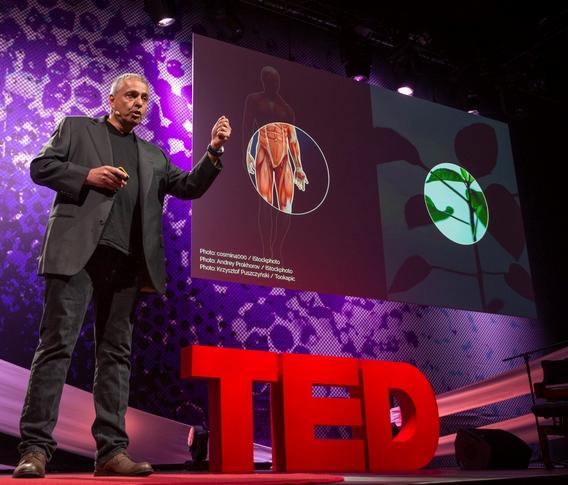32 How We’re Harnessing Nature’s Hidden Superpowers
brtryon and kmcoppin
Overview
This TED talk was given in May 2016 at a TED conference in Paris, France.
The idea Dr. Shoseyov is presenting in his talk, is that you can take inspiration from nature and use those materials in order to get new materials with better properties than the materials we currently use. He states that nature has had 3 billion years to perfect it, so we don’t need to invent anything new.
His first example is nanocrystalline cellulose from sequoia trees. Sequoia trees live for a very long time and carry loads of multiple tons while enduring harsh weather conditions like wind, rain, and sun, so the material that allows them to do this is extremely strong. This material is 10x stronger than steel per unit weight and can be sourced from paper pulp for industrial scale use.
The second example Dr. Shoseyov presents is resilin from cat fleas. Cat fleas have the ability to jump over 100x their height, so the proteins that allow them to do this are extremely elastic. The DNA can be replicated from cat fleas and genetically engineered into a plant to be extracted and used for human tissue engineering. Cat fleas are difficult to deal with, and can only produce a small amount of material. By genetically modifying plants, resilin can be produced on a larger and more sustainable scale.
The third example is Collagen. Collagen is a naturally found material that is very strong. Collagen can be sourced directly from dead pigs and cows, although this is not the most sustainable source. So Dr. Shoseyov implanted 5 type 1 collagen genes into tobacco plants, and extracted collagen from the plants for large scale human use, mostly for biomedical applications. Combining the 2 previous examples, collagen-resilin can be used for artificial tendons and ligaments to have the strength from collagen and the elasticity of the resilin.
Figure 2: Dr. Shoseyov giving his TED talk in Paris. Image source: LinkedIn
Technological advancements
One of the main points of his talk was how this technology can be commercialized through the DNA editing of plants. Some of these polymers, specifically the collagen and the cellulose have sources that are already produced industrially and can be extracted from the waste of other industrial processes. For the creation of new polymers, he talks about how plants could be DNA edited in order to produce new and unused materials on a large scale without harmful chemicals. In an article he co-authored in 2018, Shoseyov discusses previous attempts at altering the properties of the plant cell mainly focusing on reducing the amount of lignin or altering the cell structure in order to extract the desired materials. Recent technological advancements allow for in vivo modification of the cell wall structure by introducing resilin. The resilin is able to crosslink with the lignin during cell wall synthesis, giving the cell a higher yield point and toughness. It also allowed the elasticity to increase (Preis et. al, 2018).
Citations
Preis I, Abramson M, Shoseyov O. The Modification of Cell Wall Properties by Expression of Recombinant Resilin in Transgenic Plants. Mol Biotechnol. 2018 Apr;60(4):310-318. doi: 10.1007/s12033-018-0074-7. PMID: 29511941.


